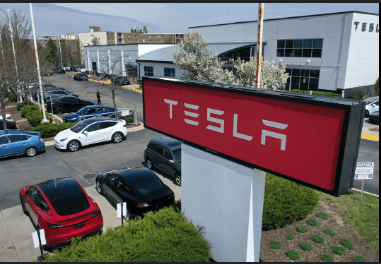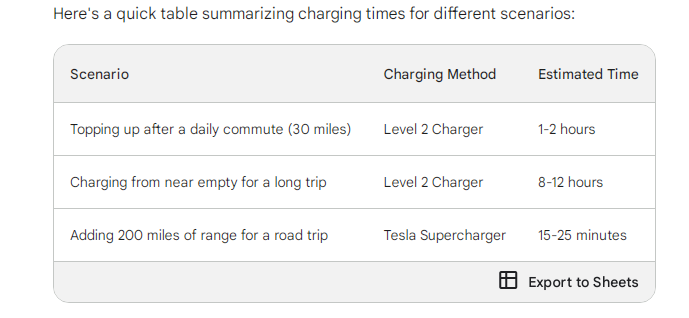Tesla's 14% Recharge: Resetting for Growth After Employee Layoffs | | Devzox Guide

Tesla Trims Workforce Over 14,000 Employees Affected in Restructuring
Tesla, the electric vehicle (EV) giant, recently announced a significant workforce reduction. In an internal email, CEO Elon Musk cited "duplication of roles" and the need to streamline for "the next phase of growth" as reasons behind the layoffs.
This move impacts over 10% of Tesla's global workforce, translating to roughly 14,000 employees.
This news comes after whispers of potential layoffs at Tesla for months. The company had previously paused stock rewards for some employees, canceled annual reviews, and reduced production at a key factory in China. These actions hinted at a potential restructuring within the organization.
The specific teams most affected by the layoffs remain unclear. However, the announcement sent shockwaves through Tesla's workforce, with some questioning the justification for cuts given the company's continued growth trajectory.
Reasons for the Layoffs
While the official explanation points towards streamlining operations, some analysts speculate that other factors might be at play.
Tesla faces increasing competition in the EV market, with established automakers and new startups vying for market share. Additionally, global economic uncertainties could be prompting Tesla to tighten its belt.
Impact on Tesla
The short-term impact of these layoffs will likely be cost savings for Tesla. However, the long-term consequences remain to be seen.
Losing experienced personnel could hinder innovation and disrupt ongoing projects. Additionally, the layoffs could negatively impact morale among remaining employees.
How Long Does it Take to Charge a Tesla? It Depends...
The time it takes to juice up your Tesla depends on several factors, but it can range anywhere from under an hour to a full day. Here's a breakdown of the key influences:
Type of Charger:
Level 1 (120v outlet):
This is the slowest method, typically found in your garage. A full charge from near empty could take a whopping 20-40 hours!
Level 2 (240v outlet):
This is a much faster option, often found in public charging stations or installed at homes with special equipment. Level 2 chargers can get you a full charge in 8-12 hours.
Level 3 DC Fast Charging (Superchargers):
Tesla's Supercharger network offers the fastest charging speeds. You can expect to gain enough range for 200 miles in just 15-25 minutes, perfect for long road trips.
Battery Depletion Of Tesla
The amount of charge your Tesla needs significantly impacts charging time. If you've only used a small portion of the battery for your daily commute, a Level 2 charger can top you up in a couple of hours. However, a near-empty battery will take considerably longer.
Tesla Model:
Different Tesla models have varying battery capacities.
A Tesla Model 3 with a smaller battery will charge quicker than a larger Model X,
even with the same charger.
Other Factors:
Environmental conditions: Extreme temperatures can slightly affect charging speeds.

Charger availability: Waiting in line at a Supercharger station can add time to your charging session.
Here's a quick table summarizing charging times for different scenarios:
ScenarioCharging MethodEstimated Time Topping up after a daily commute (30 miles)
Level 2 Charger1-2 hours charging from near empty for a long trip
level 2 Charger8-12 hours adding 200 miles of range for a road trip
Tesla Supercharger15-25 minutes
Tips for Faster Charging:
Whenever possible, utilize Level 2 chargers for faster home charging.
Take advantage of Tesla's Supercharger network for convenient top-ups during road trips.
Plan your trips around Supercharger locations to minimize waiting times.
Consider pre-conditioning your battery before arriving at a Supercharger station for slightly faster charging speeds (accessible through the Tesla app).
By understanding these factors and using the right charging option, you can optimize your Tesla's charging experience and get back on the road efficiently.
The Myers-Briggs Type Indicator (MBTI) & Information Gathering Preferences
Here's an informative piece on how the Myers-Briggs Type Indicator (MBTI) gauges information-gathering preferences:
How the MBTI Scores Information Preferences?
The MBTI delves into personality by analyzing how individuals approach the world and make decisions. A key aspect of this is how we gather information. The MBTI uses the
Sensing (S) vs. Intuition (N) dimension to assess these preferences.
Sensing (S) Preference: People who score higher in Sensing tend to favor concrete details and facts. They rely heavily on their five senses to take in information. They prefer practical demonstrations and data-driven approaches.
Intuition (N) Preference: Individuals with a stronger Intuition preference are drawn to the bigger picture and abstract concepts.
They rely on their imagination, hunches, and a focus on future possibilities when gathering information. They might enjoy brainstorming and exploring theoretical ideas.
Scoring the Preference:
The MBTI uses a series of questions that tap into these information-gathering tendencies. These questions might present scenarios or ask about how someone typically approaches a problem.
Answers that showcase a preference for details and concrete data would point towards Sensing, while those that reveal a focus on possibilities and abstract connections would indicate Intuition.
By analyzing the overall response pattern, the MBTI assigns a score on the S-N spectrum. This score reflects the individual's natural inclination towards one information-gathering style over the other. However,
it's important to remember that the MBTI doesn't categorize people rigidly. We can all access and utilize both Sensing and Intuition to some degree, depending on the situation.
Understanding the Implications:
Knowing your information-gathering preference can be valuable in various aspects of life. For instance:
Learning:
Sensing individuals might benefit from learning styles that emphasize hands-on experiences and practical applications. Intuitive learners might thrive with approaches that encourage the exploration of theories and open-ended discussions.
Decision-making:
Those with a Sensing preference might base decisions on concrete data and past experiences. Intuitive decision-makers might consider future possibilities and weigh out broader implications.
Communication:
Understanding your preferences can help tailor communication to others. Someone with a Sensing preference might appreciate clear instructions and factual details, while someone with an Intuitive preference might respond better to conceptual frameworks and a discussion of potential outcomes.
By recognizing information-gathering preferences through the MBTI, we can gain valuable insights into how we learn, make decisions, and interact with the world around us.
The Future of Tesla
Only time will tell how these layoffs will ultimately impact Tesla's future. The company must navigate a competitive landscape while ensuring it retains the talent necessary to maintain its technological edge.
This situation highlights the challenges faced by even the most prominent tech companies in a dynamic economic environment. As Tesla moves forward, it will be crucial to strike a balance between cost control and retaining the workforce needed to achieve its ambitious goals.
FAQs: Tesla's 14% Recharge:
Resetting for Growth After Employee Layoffs
Q: Why did Tesla lay off 14% of its workforce?
A: The official explanation points towards streamlining operations and reducing duplication of roles. However, some speculate that factors like increased competition and economic uncertainty might also be at play.
Q: What are the potential consequences of these layoffs?
A: Short-term benefits might include cost savings. However, long-term concerns include losing experienced personnel, hindering innovation, and damaging employee morale.
Q: How can Tesla navigate this situation effectively?
A: By focusing on solutions like targeted restructuring, reskilling programs, and transparent communication. They should continuously evaluate outcomes to ensure they achieve efficiency and cost-effectiveness and maintain a positive work environment.
Conclusion: A Recharge, Not a Reset
Tesla's decision to reduce its workforce presents a significant challenge. However, adopting a problem-solving approach that prioritizes both streamlining and employee well-being can be an opportunity for a strategic "recharge " rather than a simple reset. By focusing on reskilling, clear communication, and evaluating the impact of their decisions, Tesla can negotiate this situation and position itself for sustainable growth with a motivated workforce.